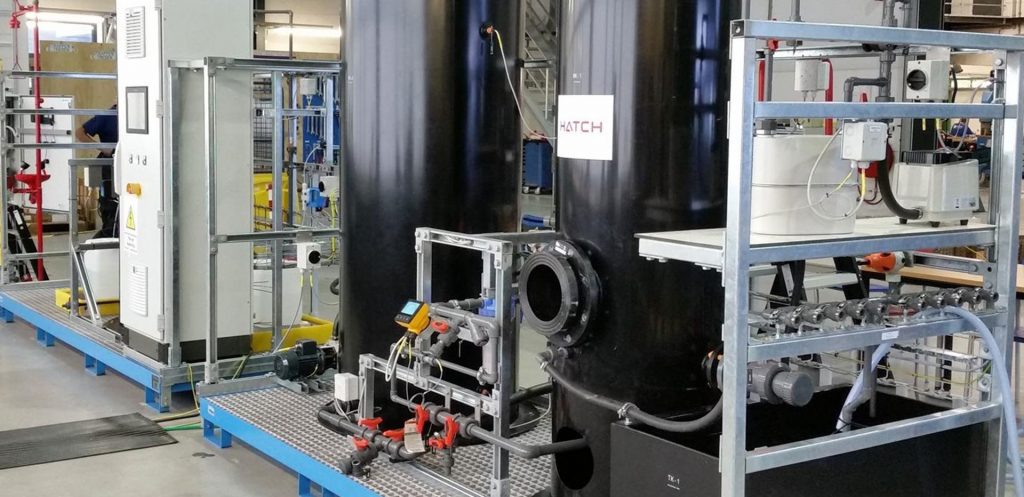On 28th September 2017, a press conference took place at the KGHM headquarters in Lubin, Poland to introduce the BIOMOre underground installation, as the novel in-situ bioleaching concept is being tested at KGHM’s operations under realistic conditions. The event was hosted by Katarzyna Rogóż (BIOMOre coordinator, KGHM Polska Miedź) and Paulina Mołodyńska-Glapska (Project Manager of the Research & Development Department at KGHM Polska Miedź).
The press conference began with presentations describing the current state of the BIOMOre project (Horst Hejny, BIOMOre project manager, MinPol), environmental aspects (Bertil Grundfelt, Kemakta Konsult AB), the pilot plant and installation (Mariusz Kirej, KGHM), and modelling (René Kahnt, GEOS). The panel then answered questions and gave interviews. The next day, participants had the opportunity to visit the underground test facilities in the Rudna mine.
Mołodyńska-Glapska explained that: “The main aim of the BIOMOre project is to verify the feasibility of combining channelling and bioleaching technologies under real conditions, with the aim of recovering metals from deep or poor ores located in Europe.” The underground installation was completed recently and is located in a specially prepared chamber in the Rudna mine. First, holes were drilled horizontally into an ore block to create the necessary flow paths. Tanks, pumps and monitoring devices were then installed. The monitoring devices measure process parameters such as the pH, conductivity and redox potential of the circulating solution as well as parameters to guarantee environmental compliance. The entire installation including the necessary safety pillar was checked for leakages before the test phase was started.
The experiment itself is divided into three stages. “We are currently around one third into the test. We are completing the stage, in which we have desalinated the ore body using water. This was necessary to decrease the chloride content inside the ore block to avoid negative impacts in the leaching phase. The next stage is the acid leaching stage to remove carbonates to avoid generation of gypsum, which would block the flow paths. The third and ultimate stage will be bioleaching, during which bacteria and sulphuric acid solution will be utilised,” said Wojciech Anacki, BIOMOre plant operator at ZG Rudna. The role of the bacteria is to oxidise ferrous to ferric iron, which is required to leach sulphidic ores, thereby regenerating the leaching solution. The first results should be available towards the end of 2017.
“The BIOMOre test in Rudna mine has never been performed in this way elsewhere. We have two main goals: first, to check whether the process is technically feasible, and second, to collect as much data as possible to critically assess the economic viability and the sustainability of the project. Only if all results are positive, we may consider the installation of a pilot plant, which would then demonstrate the BIOMOre process at almost full scale,” said Horst Hejny, the BIOMOre project manager.
The full name of the project is: „New Mining Concept for Extracting Metals from Deep Ore Deposits using Biotechnology”. The aim is to develop a process to recover copper and other strategic metals directly from the ore body using a ferric iron rich solution of low pH generated in a bioreactor.
23 partners, representing industry, academia and research institutions are involved in the BIOMOre project. The budget of the initiative is about 8.5 mln. Euro. KGHM Polska Miedź S.A. is leader of the consortium.











